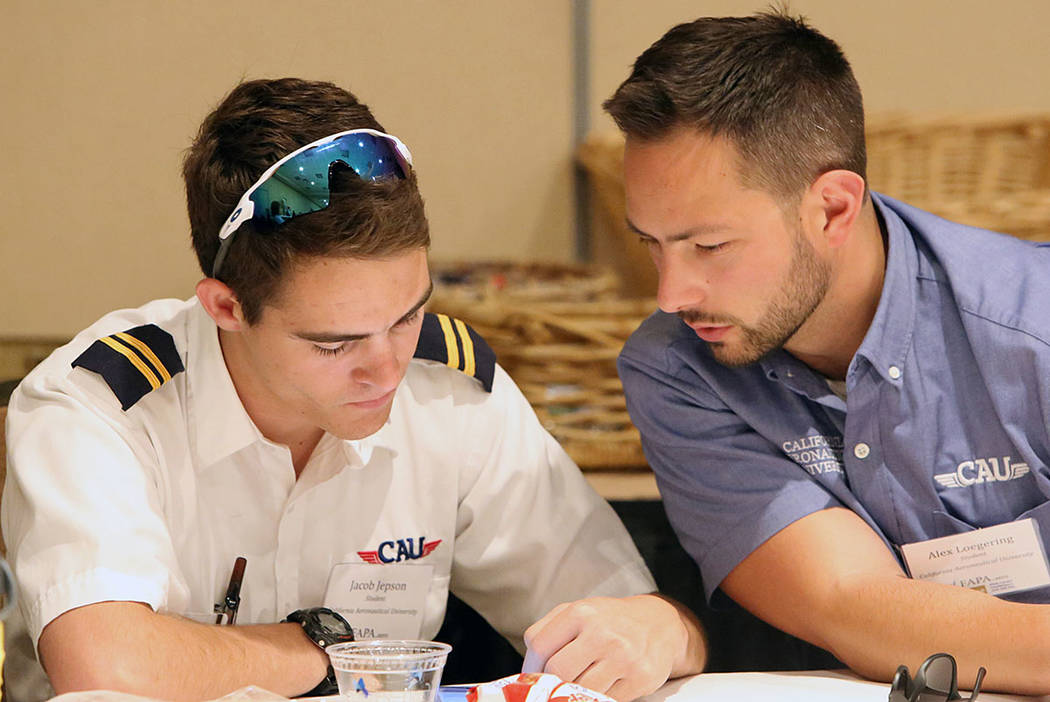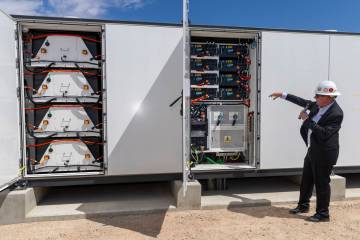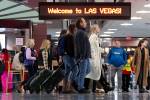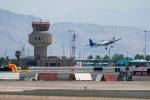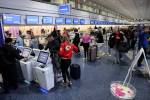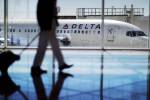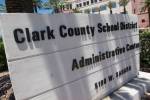Nevada feels nationwide shortage of airline pilots
A pilot shortage threatens Las Vegas’ place in the world as an air travel hub.
“It’s a real issue for any city that relies on tourism,” said Louis Smith, president of Henderson-based Future And Active Pilot Advisors, a career and financial adviser for professional pilots.
“If the shortage becomes bad enough, then airlines have to cut back on certain routes. There would be less flights per day, and they (airlines) may even have to pull out of a city,” he said.
Nevada is currently 200 airline pilots short of the 1,554 needed to keep up with the state’s tourism, gaming and entertainment industry, according to data provided by the Governor’s Office of Economic Development.
Nationally, the pilot deficit will reach about 14,500 by 2026, according to a study by the University of North Dakota’s Aviation Department.
Regional carriers, which contract with major airlines to deliver passengers to airline hubs, are currently feeling the brunt of the shortage — including one of Las Vegas’ closest regional airlines, Mesa.
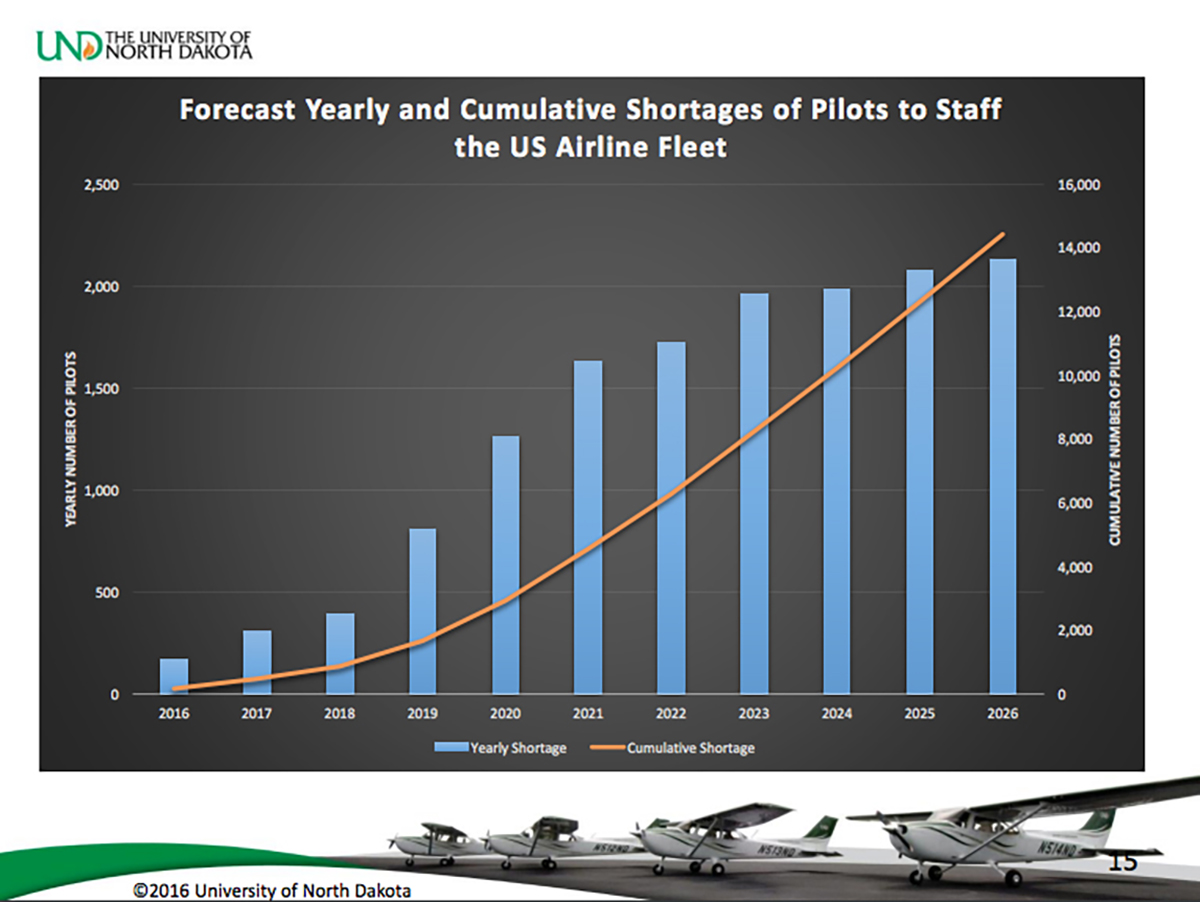
‘Severe and growing’
Mesa Airlines Chairman and CEO Jonathan Ornstein said the issue is “severe and growing.”
“We have turned down business that would have provided additional service to our partners because we do not feel that we can take on any additional growth at this time,” Ornstein said. “Almost every regional airline in the country has aircraft parked that they cannot staff.” (Mesa, he said, is not yet one of them.)
Ornstein attributes the shortage largely to the Federal Aviation Administration Safety and Extension Act of 2010, which increased the flight time requirement for airline and cargo pilots from 250 hours to 1,500 hours. The increased requirement has added around two years of lead time before a pilot can be hired for a U.S. airline, he said, and that is deterring people from entering the field.
Smith said the pilot shortage was also created in part by the shrinking military.
The military used to be a direct source of airline pilots, he said, but that isn’t the case anymore.
“The military was shrinking, and they were offering incentives to stay in,” Smith said.
As the Las Vegas Review-Journal previously reported, the pilot shortage is also exacerbated by a rash of retirements. The FAA changed the mandatory pilot retirement age from 60 to 65 in 2007, but now the pool is shrinking, and about 500 commercial pilots retire every month.
Recruitment ‘indigestion’
Larger airlines have made up for the supply gap largely by hiring pilots from regional airlines. Parent airlines, like Delta and other larger airlines, are using regional airlines as an in-house workforce pipeline of sorts, Smith said.
“Three years ago, you’d start out making $25,000 per year range in the regional airlines. Now it’s $60,000,” Smith said.
But other regional carriers without a parent airline are having a difficult time keeping up with the competitive salary and benefits. Without a parent airline to benefit from or to absorb those added operating costs, consumers will eventually feel the problem by paying more for ticket prices, Ornstein said.
“There’s no job creation here,” Ornstein said. “Everybody’s cannibalizing each other, paying big bonuses to move people over.”
Smith said airlines are experiencing some “indigestion” in figuring out how to recruit.
Getting creative
Eric Gust, vice president of operations, safety and security for Las Vegas-based Allegiant Air, said the company is not feeling any impact of the pilot shortage so far, but it is preparing for the issue just in case.
“We are setting up avenues to continue the pipeline of applicants into the future — if we do end up seeing a reduced applicant pool. We have our first two flow-through agreements with Grand Canyon Scenic Airlines and with AmeriFlight, and we are pursuing other avenues as well to make sure we’re prepared for any scenario,” Gust said via email.
Greg Unterseher, director of representation for Airline Professionals Association Teamsters Local 1224, the union representing Allegiant’s pilots, said the airline’s applicant pool and pursuits of other avenues “are not as rosy as they say it is.”
The flow-through agreements with Grand Canyon Scenic Airlines and AmeriFlight aren’t formalized with the union, he said.
Meanwhile, Allegiant does not have a parent airline, he said, and pilots have become “savvy shoppers” in terms of choosing where they want to work.
Gust said Allegiant attracts pilots with benefits like shorter upgrade periods between being a first officer and sitting in the captain’s chair, along with an out-and-back schedule that allows crews to come home after a day of flying instead of having to spend the night out of town.
But Unterseher said other airline contract negotiations and re-negotiations are popping up with boosts like tuition reimbursement. “Pilots are demanding a lot higher premiums, and their (Allegiant’s) contract is rapidly seeping behind market.”
‘Digging down deep’
Smith said the key to rebuilding a pipeline and recruiting pilots is to start young.
“Building the next generation of airplanes takes 10 to 15 years of planning. Building the next generation of pilots is the same thing,” Smith said.
Nevada already has a model for exposing youth to aviation. Jim Bridger Middle School has an exploratory aviation program which feeds into an aviation program at Rancho High School.
“The state needs to look at expanding that structure,” Smith said.
Several students from Rancho, along with about 60 others potentially interested in pursuing a career as an airline pilot, attended a recent forum organized by Future And Active Pilot Advisors at the Tuscany Suites and Casino.
“They learned a lot about the industry, the costs, the total demand, the potential as far as the career itself, what kind of earnings you could see as an airline pilot,” Smith said. “Some were teenagers, some were seniors, and some were career changers.”
It can be time consuming and expensive to learn how to fly — sometimes with a price tag in the $200,000 range, Smith said. His goal is to help potential pilots be prepared and come up with a plan to see their education and certification through.
Smith said he started the annual forum in 2011 as a direct response to the complaints he heard about hiring within the airline industry.
“We built this forum to help build the pilot pipeline,” he said. “Somebody had to start it.”
Contact Nicole Raz at nraz@reviewjournal.com or 702-380-4512. Follow @JournalistNikki on Twitter.
Airlines looking for help
According to FAPA.aero, this year:
— American Airlines plans to hire about 750 pilots.
— Atlas Air plans to hire about 280 pilots.
— Southwest Airlines plans to hire about 784 pilots.
— Spirit Airlines plans to hire 350 pilots.
— United Airlines plans to hire up to 600 pilots.



